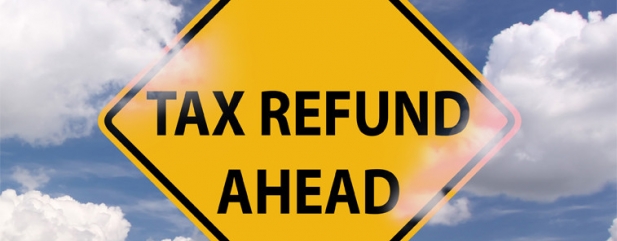Archived article
Please note that tax, investment, pension and ISA rules can change and the information and any views contained in this article may now be inaccurate.
Are you due a pension freedoms tax refund?

You may have paid thousands of pounds too much in tax if you made a single ad-hoc withdrawal from your retirement pot from age 55 following the introduction of the pension freedoms just over two years ago.
The tax quirk is most likely to have affected those who take a single Uncrystallised Funds Pension Lump Sum (UFPLS) payment in a given tax year.
Tens of thousands of savers are likely to have accessed their fund in this way, while anyone planning on making a withdrawal could also be affected.
Those who are taking a regular monthly income from their fund, either through flexi-access drawdown or an annuity, should be taxed at the correct rate.
How does it work?
When you access your pension pot through UFPLS, you’ll get 25% tax-free and the remaining 75% should be taxed at your marginal rate of income tax.
For example, if you make a £13,333 UFPLS withdrawal, £3,333 (25%) should be tax-free and £10,000 taxed at your marginal rate.
Given the personal allowance for 2017/18 is £11,500, if you had no other income the entire withdrawal should be tax-free.
However, many savers will have already been left confused or angry – or both – after finding a large chunk of their withdrawal has disappeared to the taxman. This is because HMRC rules mean that in most cases your pension provider will tax a single UFPLS withdrawal on a ‘Month 1’ basis.
Under ‘Month 1’, your total tax allowances for the year are divided by 12, and the tax is then taken off your pension withdrawal.
What’s the result? Rather than paying zero tax, the saver in the previous example would be hit with a charge of over £3,000.
Similarly, a £15,000 withdrawal would be overtaxed by more than £5,000, while a £40,000 UFPLS payment would be hit with a £16,000 charge – over £10,000 more than should have been paid.
The actual tax paid will depend on whether you have any other sources of income. It’s also worth noting the figures might alter if you live in Scotland as tax bands are different north of the border.
Clearly failing to do the right paperwork – and it is onerous for anyone who doesn’t have a regulated financial adviser – can be extremely costly.
How to reclaim your money
As with many things tax-related the solution isn’t straightforward. How to make a claim for any overpaid tax depends on the nature of the withdrawals and your personal circumstances.
In brief:
1. If the payment used up the entire pension pot and you had no other income in the tax year, HMRC form P50Z needs to be filled out.
2. If the payment used up the pension pot and you have other taxable income, HMRC form P53Z needs to be completed.
3. If the payment didn’t use up the pension pot and you are not taking regular payments, fill in HMRC form P55. This form can only be used if the pension provider cannot process the refund.
HMRC says that, once it has received the relevant paperwork, you will receive any tax due to you within 30 days. It’s up to the individual to notify them using the relevant form.
Anyone who doesn’t will be relying on the taxman fixing the problem and there is no guarantee you will get the money when you need it.
A possible solution
I understand why HMRC has taken this stance on single UFPLS withdrawals. By placing the responsibility for sorting out tax on the individual, it reduces its own administration burden and in the process boosts short-term tax revenues.
However, it seems grossly unfair to place all the responsibility on people who think they are doing the right thing by keeping withdrawals below the relevant income tax band.
This is particularly the case for basic rate taxpayers who are less likely to either have an adviser or any experience in filling out tax returns.
There is a simple solution to all of this. For over two decades HMRC, under capped drawdown, allowed withdrawals to be taxed on a ‘Month 12’ basis without any problems or complaints.
Reverting back to this system for single UFPLS withdrawals would be fairer and simpler for those the system is supposed to work for, namely savers.
TOM SELBY,
senior analyst, AJ Bell
Important information:
These articles are provided by Shares magazine which is published by AJ Bell Media, a part of AJ Bell. Shares is not written by AJ Bell.
Shares is provided for your general information and use and is not a personal recommendation to invest. It is not intended to be relied upon by you in making or not making any investment decisions. The investments referred to in these articles will not be suitable for all investors. If in doubt please seek appropriate independent financial advice.
Investors acting on the information in these articles do so at their own risk and AJ Bell Media and its staff do not accept liability for losses suffered by investors as a result of their investment decisions.

 magazine
magazine










